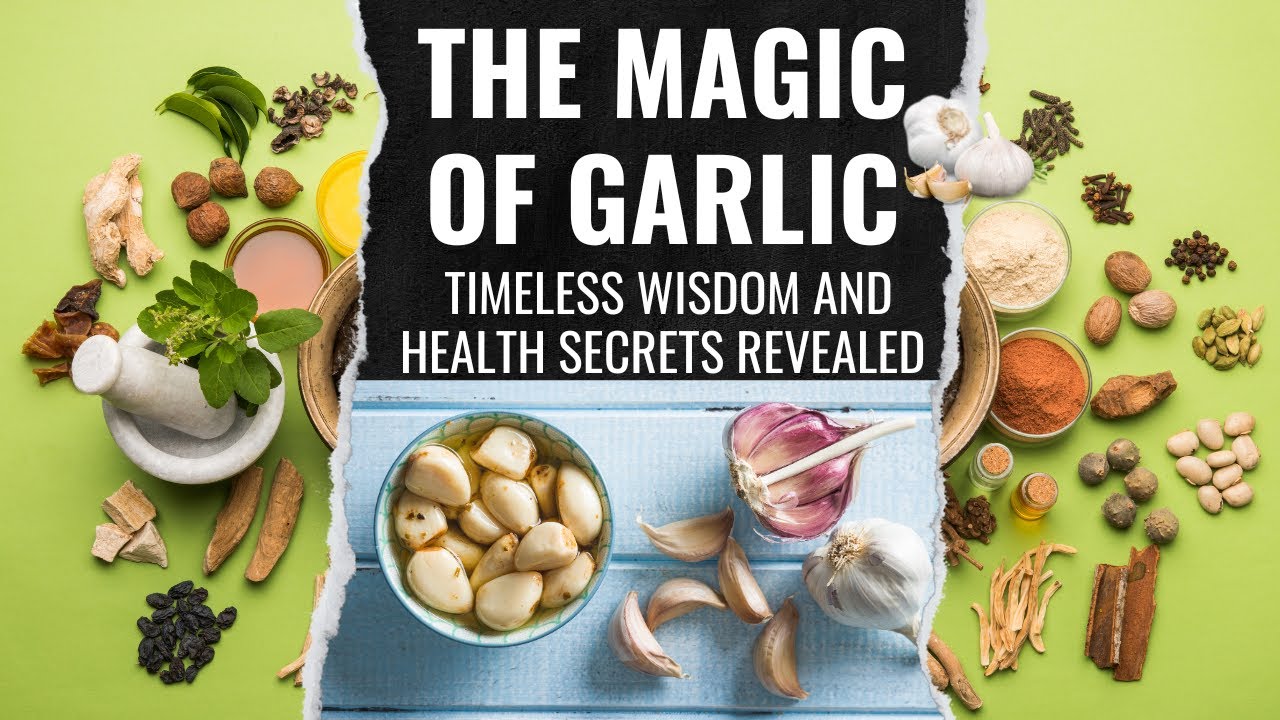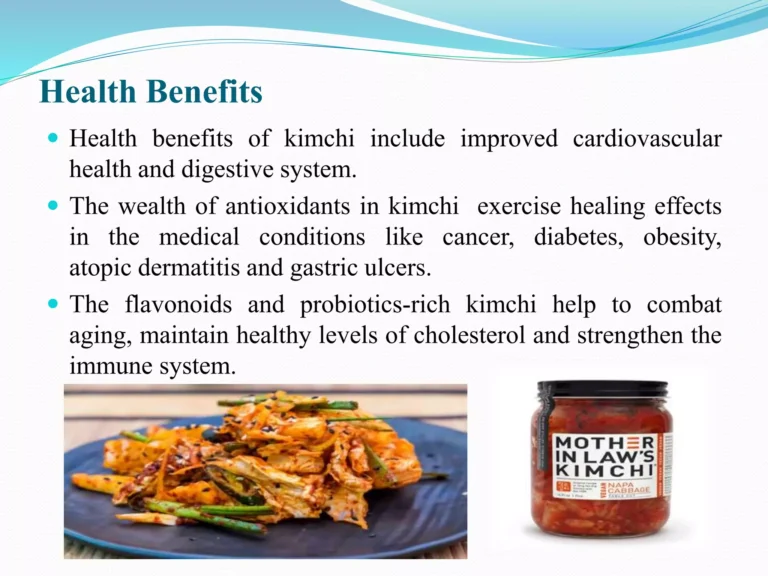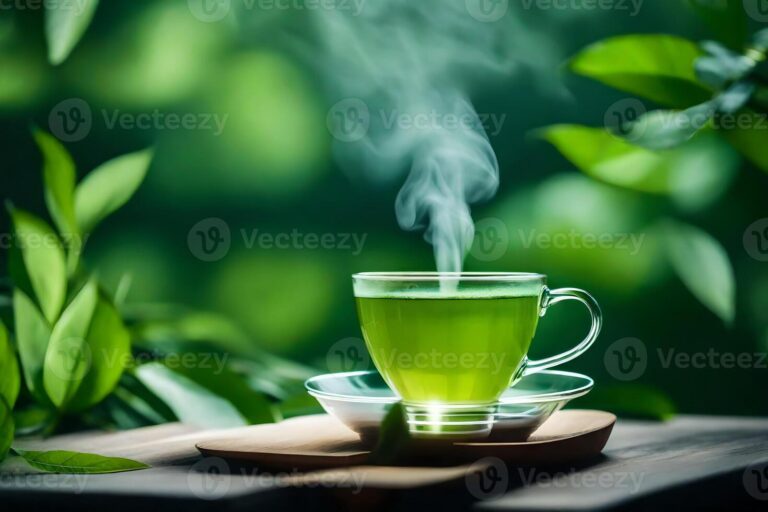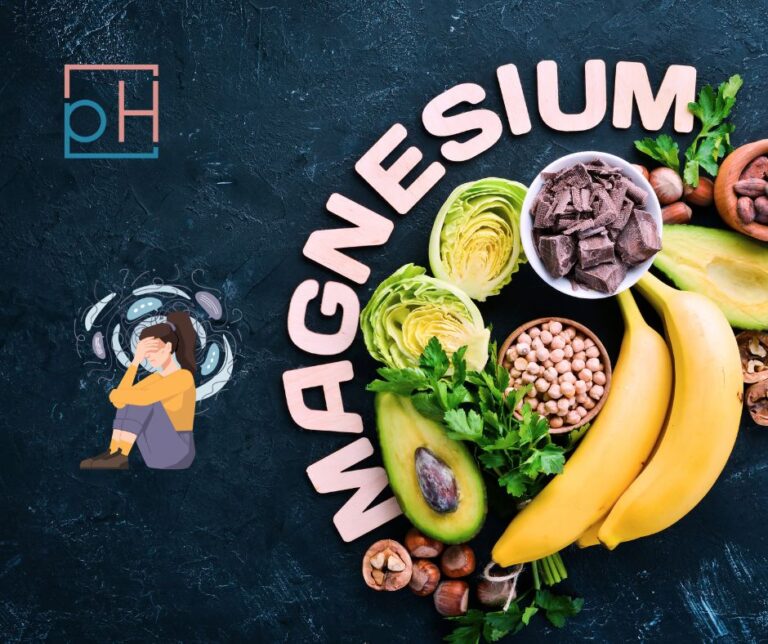Unlocking the Ancient Wisdom: Garlic’s Timeless Health Secrets
From the dawn of civilization, when humanity first sought solace and sustenance from the earth, certain plants emerged not merely as food but as revered healers. Among these botanical titans, one humble bulb, with its pungent aroma and fiery taste, carved an indelible mark on the annals of human history: Allium sativum, the ubiquitous garlic. Its story is not just one of a culinary ingredient, but a sweeping epic of ancient wisdom, folk remedies, mystical beliefs, and ultimately, modern scientific validation. It is a tale spanning millennia and continents, revealing how the secrets embedded within its cloves continue to resonate with profound relevance in our quest for health and longevity today.
Imagine a world where the line between medicine and magic was blurred, where the forces of nature were both revered and feared. In this world, the discovery of garlic’s potency must have felt like uncovering a precious secret, a gift from the gods. This narrative journey invites us to explore the depths of this ancient wisdom, to peel back the layers of myth and folklore, and to understand the sophisticated science that underpins garlic’s enduring status as a timeless health secret. For the knowledgeable seeker, this story offers not just facts, but a deeper appreciation for the profound connection between nature, tradition, and the relentless march of scientific discovery.
The Odyssey of Allium Sativum: A Historical & Cultural Tapestry
Our story begins in the arid steppes of Central Asia, the ancestral home of wild garlic, some 5,000 to 7,000 years ago. From these ancient plains, carried by the winds of trade and migration, garlic embarked on an extraordinary odyssey, weaving itself into the very fabric of human civilization. Its journey is a testament to its intrinsic value, recognized across diverse cultures long before the advent of microscopes or chemical analyses.
The earliest documented evidence of garlic’s medicinal use hails from ancient Egypt, a civilization renowned for its sophisticated understanding of medicine and engineering. Hieroglyphs and papyri, notably the Ebers Papyrus dating back to 1550 BCE, reveal garlic’s esteemed status. It was administered to pyramid builders to enhance their strength and ward off illness, believed to protect them from disease and ensure their vigor during arduous labor. Garlic cloves have even been found in the tomb of Tutankhamun, underscoring its sacred and protective qualities. It was not merely a foodstuff but a potent symbol of vitality, offered to deities and used in rituals.
Moving eastward, we find garlic deeply embedded in the ancient healing traditions of Mesopotamia. Sumerian cuneiform tablets from as early as 2600 BCE detail recipes for medicinal concoctions featuring garlic, used for various ailments. The Assyrians, Babylonians, and other cultures in the Fertile Crescent integrated it into their pharmacopeias, recognizing its broad-spectrum healing capabilities.
The Greeks, inheritors of much Near Eastern knowledge, held garlic in high regard. Hippocrates, the "Father of Medicine," prescribed garlic for a wide array of conditions, including respiratory problems, digestive disorders, and as a cleansing agent for the uterus. Greek athletes consumed it before Olympic events, believing it enhanced performance, while soldiers relied on it for courage and protection in battle. The Romans, not to be outdone, also embraced garlic with fervor. Pliny the Elder, in his monumental Naturalis Historia, listed numerous therapeutic applications for garlic, echoing the Greek tradition of using it for strength, vitality, and as a potent remedy against infections and parasitic infestations.
Further east, in the vast and ancient civilizations of Asia, garlic’s reputation soared. In Traditional Chinese Medicine (TCM), garlic has been revered for millennia for its warming properties, its ability to dispel toxins, kill parasites, and treat respiratory and digestive complaints. It was considered a powerful antidote to poisons and a fortifier of the qi (life force). Similarly, in Ayurveda, the traditional Indian system of medicine, garlic is classified as a potent herb with rasayana (rejuvenating) properties. It was prescribed for heart conditions, arthritis, and as an aphrodisiac, balancing the body’s doshas.
As the Roman Empire waned and Europe entered the Middle Ages, garlic’s role shifted, but its importance never diminished. In a time rife with plagues and superstition, garlic became a universal prophylactic. It was hung in doorways to ward off evil spirits, vampires, and witches, but more practically, its pungent aroma and perceived medicinal properties made it a frontline defense against infectious diseases. Herbalists and early physicians continued to prescribe it for fevers, coughs, and gastrointestinal issues, often in conjunction with other potent herbs.
The New World also welcomed garlic with open arms. Introduced by European settlers, it quickly found its way into indigenous healing practices and culinary traditions, becoming a staple in many Latin American and Caribbean cuisines, where its medicinal virtues were readily recognized.
By the time the scientific revolution began to take hold, garlic had amassed an astonishing global portfolio of anecdotal evidence and traditional uses. It had transitioned from a mystical amulet to a folk remedy, always retaining its core identity as a powerful agent of health. This rich historical tapestry sets the stage for our modern understanding, prompting scientists to unravel the "why" behind the "what" that ancient civilizations instinctively knew.
The Alchemical Core: Deconstructing Garlic’s Bioactive Arsenal
The true magic of garlic, the very essence of its ancient wisdom, lies hidden within its complex chemistry. For centuries, its effects were observed but not understood. Modern science, however, has embarked on a remarkable journey to deconstruct this humble bulb, revealing a veritable arsenal of bioactive compounds, each playing a role in its profound health benefits. This is where the story shifts from historical narrative to a fascinating exploration of molecular alchemy.
The most celebrated and characteristic compound in garlic is allicin. Yet, allicin itself isn’t present in an intact garlic clove. This is the "pungent paradox." When a garlic clove is crushed, chopped, or bruised, a remarkable enzymatic reaction occurs. An enzyme called alliinase, stored separately within the plant cells, comes into contact with its substrate, alliin (S-allyl-L-cysteine sulfoxide). This interaction rapidly converts alliin into allicin, the compound responsible for garlic’s characteristic pungent odor and many of its acute biological activities.
Allicin, however, is highly unstable. It quickly breaks down into a cascade of other organosulfur compounds, each with its own unique properties. These include:
- Ajoene: A potent anti-thrombotic agent, preventing blood clots. It’s particularly prevalent in oil-macerated garlic or aged garlic extracts.
- Diallyl disulfide (DADS) and Diallyl trisulfide (DATS): These compounds are responsible for much of garlic’s antimicrobial and anticancer activity. They are formed during the breakdown of allicin, especially when garlic is cooked.
- S-allyl-cysteine (SAC) and S-allyl-mercaptocysteine (SAMC): These are water-soluble compounds, stable and odorless, and are particularly abundant in aged black garlic extracts. They possess significant antioxidant and neuroprotective properties, and contribute to cardiovascular health without the pungent side effects.
Beyond these well-known organosulfur compounds, garlic is a treasure trove of other beneficial constituents:
- Flavonoids and Phenolic Acids: These powerful antioxidants help neutralize free radicals, protecting cells from oxidative damage.
- Selenium: An essential trace mineral with antioxidant properties and crucial for thyroid function and immune health.
- Manganese: Important for bone health, metabolism, and antioxidant defense.
- Vitamin C: A well-known antioxidant and immune booster.
- Vitamin B6: Essential for brain development and function, and involved in numerous metabolic processes.
For the knowledgeable audience, understanding the mechanism of action of these compounds is key. It’s not just that garlic "works," but how it works. Many of garlic’s beneficial effects stem from its ability to modulate key biological pathways:
- Antioxidant Activity: Organosulfur compounds, flavonoids, and selenium directly scavenge free radicals and also upregulate the body’s endogenous antioxidant enzymes (like glutathione peroxidase and superoxide dismutase).
- Anti-inflammatory Effects: Garlic compounds can inhibit the activity of pro-inflammatory enzymes like COX-2 and modulate the production of inflammatory cytokines, thus dampening the inflammatory response.
- Enzyme Modulation: Allicin and its derivatives can interact with various enzymes, either inhibiting or enhancing their activity, which is crucial for processes like cholesterol synthesis, detoxification, and blood pressure regulation.
- Hydrogen Sulfide (H2S) Production: Emerging research suggests that garlic compounds can be converted into H2S within the body. H2S acts as a gasotransmitter, playing vital roles in cardiovascular health, vasodilation, and cellular protection.
The intricate interplay of these compounds, their varying concentrations depending on preparation (raw, cooked, aged), and their dynamic transformations within the body, paint a picture of a remarkably sophisticated natural medicine. It’s an alchemical dance, where a simple act like crushing a clove unleashes a symphony of biochemical reactions, orchestrating a cascade of health benefits that continue to astound scientists.
The Labyrinth of Healing: Garlic’s Multifaceted Health Benefits
Armed with this understanding of garlic’s chemical prowess, we can now embark on a deeper exploration of its health benefits, moving from ancient observations to the rigorous validation of modern scientific inquiry. Each benefit is a chapter in garlic’s heroic saga against disease, echoing the prophecies of ancient healers with the precise language of contemporary research.
Cardiovascular Guardian: A Shield for the Heart and Vessels
Perhaps garlic’s most thoroughly researched and celebrated benefit lies in its profound impact on cardiovascular health. It acts as a multi-pronged guardian, addressing several key risk factors for heart disease:
- Blood Pressure Regulation: Studies consistently show that garlic, particularly aged garlic extract, can significantly reduce elevated blood pressure. The mechanisms are complex, involving the ability of garlic compounds (like allicin and its derivatives) to increase the production of nitric oxide, a potent vasodilator that relaxes blood vessels, and to inhibit the activity of angiotensin-converting enzyme (ACE), similar to prescription ACE inhibitors.
- Cholesterol and Lipid Modulation: While the effects on cholesterol are less dramatic than on blood pressure, garlic has been shown to modestly reduce total cholesterol and LDL ("bad") cholesterol levels, and in some cases, increase HDL ("good") cholesterol. It also helps reduce triglyceride levels. These effects are thought to be mediated by the inhibition of cholesterol synthesis enzymes in the liver.
- Anti-platelet Aggregation (Blood Thinning): Ajoene, along with other organosulfur compounds, possesses significant anti-platelet activity, preventing platelets from clumping together to form dangerous blood clots. This action is crucial in preventing heart attacks and strokes, making garlic a natural anticoagulant, albeit one that requires careful consideration with prescription blood thinners.
- Atherosclerosis Prevention: Garlic helps prevent the hardening and narrowing of arteries (atherosclerosis) by reducing oxidative stress, inflammation, and improving endothelial function (the health of the inner lining of blood vessels). Its ability to reduce plaque formation is a cornerstone of its cardiovascular protection.
Immune System Fortifier: A Natural Defense Against Invaders
Long before the germ theory of disease, ancient cultures intuitively used garlic to ward off infections. Modern science has unveiled the powerful antimicrobial properties of garlic, positioning it as a potent immune system fortifier:
- Antibacterial Action: Allicin and its breakdown products (DADS, DATS) exhibit broad-spectrum antibacterial activity against a wide range of bacteria, including antibiotic-resistant strains. It has shown promise against common pathogens like Staphylococcus aureus (MRSA), Salmonella, E. coli, and even Helicobacter pylori, the bacterium responsible for stomach ulcers.
- Antiviral Properties: Garlic compounds have demonstrated antiviral effects against various viruses, including those responsible for the common cold, influenza, and herpes simplex virus. It can inhibit viral replication and boost immune responses to viral infections.
- Antifungal and Antiparasitic Effects: Garlic is effective against various fungi, including Candida albicans, a common cause of yeast infections. It also possesses antiparasitic properties, historically used against intestinal worms and other parasites.
- Immunomodulatory Effects: Beyond directly killing pathogens, garlic modulates the immune system. It can enhance the activity of natural killer (NK) cells, increase the production of beneficial cytokines, and improve the function of other immune cells, thus strengthening the body’s overall defense mechanisms.
Cancer Crusader: A Protector Against Cellular Malignancy
One of the most exciting and actively researched areas of garlic’s health benefits is its potential role in cancer prevention and treatment. Its multifaceted approach to cancer makes it a compelling natural agent:
- Antioxidant Properties: By neutralizing free radicals, garlic’s compounds protect DNA from damage, a critical step in preventing cancer initiation.
- Apoptosis Induction: Garlic can induce apoptosis, or programmed cell death, in various cancer cells, effectively eliminating them without harming healthy cells.
- Inhibition of Cell Proliferation: It can halt the uncontrolled growth and division of cancer cells, slowing tumor progression.
- Detoxification Enzyme Enhancement: Garlic compounds enhance the activity of phase I and phase II detoxification enzymes in the liver, which are crucial for neutralizing carcinogens and facilitating their excretion from the body.
- Specific Cancer Prevention: Epidemiological studies have consistently linked higher garlic consumption to a reduced risk of several cancers, particularly colorectal, stomach, prostate, and breast cancers.
Anti-inflammatory Agent: Quelling the Flames of Chronic Disease
Chronic inflammation is now recognized as a root cause of many modern diseases, including heart disease, diabetes, arthritis, and neurodegenerative disorders. Garlic’s anti-inflammatory properties offer a significant therapeutic advantage:
- Modulation of Inflammatory Pathways: Garlic compounds can inhibit the production of pro-inflammatory mediators and enzymes (like NF-κB and COX-2), effectively dampening the inflammatory response at a cellular level.
- Relevance to Chronic Diseases: By reducing systemic inflammation, garlic contributes to the prevention and management of a wide range of inflammatory conditions, offering a natural approach to disease modification.
Metabolic Health & Blood Sugar Regulation: Balancing the Body’s Fuel
Emerging research highlights garlic’s beneficial role in metabolic health, particularly in managing blood sugar levels:
- Insulin Sensitivity: Garlic may improve insulin sensitivity, allowing cells to more effectively absorb glucose from the bloodstream, a critical factor in preventing and managing type 2 diabetes.
- Glucose Metabolism: It can influence various enzymes involved in glucose metabolism, contributing to better blood sugar control.
Bone Health and Neuroprotection: Expanding Horizons
Beyond the well-established benefits, research continues to uncover new potential roles for garlic:
- Bone Health: Some studies suggest that garlic may help reduce bone loss by decreasing markers of oxidative stress that contribute to osteoporosis.
- Neuroprotection: The antioxidant and anti-inflammatory properties of garlic compounds like SAC may offer protection against neurodegenerative diseases like Alzheimer’s and Parkinson’s by reducing oxidative damage and inflammation in the brain.
Each of these benefits, meticulously investigated and increasingly validated by modern science, reinforces the ancient wisdom surrounding garlic. It transforms the anecdotal into the evidence-based, revealing a natural powerhouse capable of addressing a remarkable spectrum of human ailments.
Navigating the Nuances: Preparation, Potency, and Practicalities
Like any potent medicine, understanding how to best utilize garlic requires navigating its nuances. The way garlic is prepared significantly impacts its chemical profile and, consequently, its therapeutic potency. This section serves as a practical guide, translating ancient wisdom and scientific findings into actionable advice for the knowledgeable consumer.
Raw vs. Cooked vs. Aged: The Transformative Power of Preparation
The "allicin burst" that occurs when raw garlic is crushed is undoubtedly powerful. For maximum acute antimicrobial and anti-cancer effects, consuming raw, freshly crushed garlic is often recommended. However, allicin is volatile and heat-sensitive.
- Raw Garlic: When crushed, raw garlic delivers a potent dose of allicin. To maximize allicin formation, it’s often advised to crush or chop garlic and let it sit for 5-10 minutes before consuming or adding to food. This allows the alliinase enzyme sufficient time to convert alliin to allicin. This form is best for immune support and acute infections.
- Lightly Cooked Garlic: Gentle cooking, such as sautéing for a short period, can retain some of garlic’s beneficial compounds. However, prolonged high-heat cooking significantly degrades allicin. Some studies suggest that cooking garlic whole or crushing it and allowing it to sit before cooking can help preserve some beneficial compounds. Diallyl sulfides, which also have benefits, are more heat-stable.
- Aged Black Garlic: This is a fascinating transformation. Raw garlic is aged under controlled heat and humidity for several weeks, resulting in dark, sweet, and mellow cloves with a distinct flavor. The aging process converts many of the unstable, pungent organosulfur compounds into more stable, water-soluble, and odorless compounds like S-allyl-cysteine (SAC). Aged black garlic is particularly rich in antioxidants, and SAC is highly bioavailable, offering robust benefits for cardiovascular health and neuroprotection without the strong odor or gastrointestinal upset associated with raw garlic.
Supplements: Standardized Extracts and Quality Considerations
For those who find the taste or odor of garlic challenging, or who require a consistent dose for therapeutic purposes, garlic supplements offer a convenient alternative. However, not all supplements are created equal:
- Aged Garlic Extract (AGE): This is one of the most well-researched and clinically validated forms of garlic supplement. It is produced by extracting garlic in an ethanol-water solution over a prolonged period, leading to a high concentration of stable, water-soluble compounds like SAC and SAMC, with minimal allicin or its pungent breakdown products. AGE is particularly noted for its cardiovascular and antioxidant benefits.
- Garlic Oil Macerates: These are extracts of crushed garlic in vegetable oil. They primarily contain vinyldithiins and ajoene, which are lipid-soluble. They are known for their anti-thrombotic properties.
- Garlic Powder: Often contains alliin but may lack alliinase activity, meaning allicin may not be formed effectively unless the powder is rehydrated and combined with active alliinase.
- Allicin-Stabilized Supplements: Some newer supplements attempt to stabilize allicin, but its inherent instability remains a challenge.
When choosing a supplement, look for standardized extracts that specify the content of key bioactive compounds (e.g., SAC for aged garlic extract, or alliin/allicin potential for raw garlic supplements). Quality, reputable brands are essential to ensure purity and potency.
Side Effects & Interactions: Wielding the Power Responsibly
While garlic is generally safe for most people, its potency necessitates awareness of potential side effects and interactions:
- Bad Breath and Body Odor: The volatile sulfur compounds, particularly allicin and its derivatives, are absorbed into the bloodstream and released through the lungs (breath) and skin (body odor). This is the most common and often unavoidable side effect, though it is less pronounced with aged garlic extracts.
- Gastrointestinal Upset: High doses of raw garlic can cause heartburn, stomach upset, nausea, or diarrhea in some individuals, especially those with sensitive digestive systems.
- Anticoagulant Interactions: Due to its anti-platelet (blood-thinning) effects, garlic can interact with anticoagulant medications like warfarin, increasing the risk of bleeding. Individuals on such medications should consult their doctor before significantly increasing garlic intake or starting garlic supplements.
- Surgery Considerations: Because of its blood-thinning properties, it’s generally recommended to discontinue high-dose garlic supplements at least two weeks before scheduled surgery to minimize the risk of excessive bleeding.
- Allergies: Although rare, some individuals may experience allergic reactions to garlic, including skin rashes, asthma, or anaphylaxis.
Culinary Integration: Beyond Medicine, A Global Flavor
Beyond its medicinal prowess, garlic’s timeless secret also lies in its unparalleled ability to transform food. Its pungent, savory, and sometimes sweet notes are fundamental to cuisines across the globe. From the robust aioli of the Mediterranean to the spicy curries of India, from the delicate stir-fries of China to the hearty stews of Eastern Europe, garlic is an indispensable flavor enhancer. Integrating garlic into daily meals, whether raw in dressings, roasted for sweetness, or sautéed as a base for countless dishes, is perhaps the most enjoyable and sustainable way to unlock its health secrets.
The Future of Allium Sativum: Ongoing Research and Uncharted Territories
The story of garlic is far from over. As scientific tools become more sophisticated, researchers continue to uncover new dimensions of its ancient wisdom. The future holds exciting possibilities:
- Genomics and Epigenetics: Understanding the garlic genome and how its compounds interact with human epigenetics (gene expression) could unlock even more targeted therapeutic applications.
- New Compound Discoveries: The complex chemistry of garlic still harbors secrets. New bioactive compounds, or novel interactions between existing ones, may yet be identified.
- Targeted Therapeutic Applications: Research is exploring the potential of garlic compounds in treating specific diseases, such as certain types of antibiotic-resistant infections, specific autoimmune disorders, or even neurodegenerative conditions, moving beyond general health promotion.
- Synergistic Effects: Investigating how garlic interacts with other botanicals or pharmaceutical drugs, both beneficially and potentially adversely, will be crucial for integrated healthcare approaches.
- Sustainable Cultivation: As demand for garlic and its extracts grows, research into sustainable and organic cultivation methods will ensure its continued availability and potency.
The saga continues, with new chapters yet to be written. Each discovery reaffirms the profound foresight of our ancestors and underscores the enduring power of nature’s pharmacy.
Conclusion: A Timeless Legacy
From the sun-baked plains of Central Asia to the meticulously equipped laboratories of the 21st century, garlic has journeyed through time, its story echoing with the wisdom of generations. What began as an intuitive discovery, a mystical belief, and a folk remedy, has blossomed into a scientifically validated superfood, a testament to the remarkable power embedded within the natural world.
The journey of unlocking garlic’s ancient wisdom reveals a profound truth: that the answers to many of our health challenges often lie in plain sight, patiently waiting to be rediscovered and understood. Its timeless health secrets – its prowess as a cardiovascular guardian, an immune fortifier, a cancer crusader, and an anti-inflammatory agent – are not mere anecdotes but deeply substantiated facts.
As we continue to navigate the complexities of modern health, the humble garlic bulb stands as a powerful reminder of the enduring legacy of natural medicine. Integrating this ancient wisdom with our contemporary understanding offers a holistic path toward well-being, inviting us to embrace a simple, potent gift from the earth. The pungent aroma, the fiery taste, and the profound healing power of garlic truly represent a timeless secret, a heritage we are fortunate to continually unlock and cherish.







